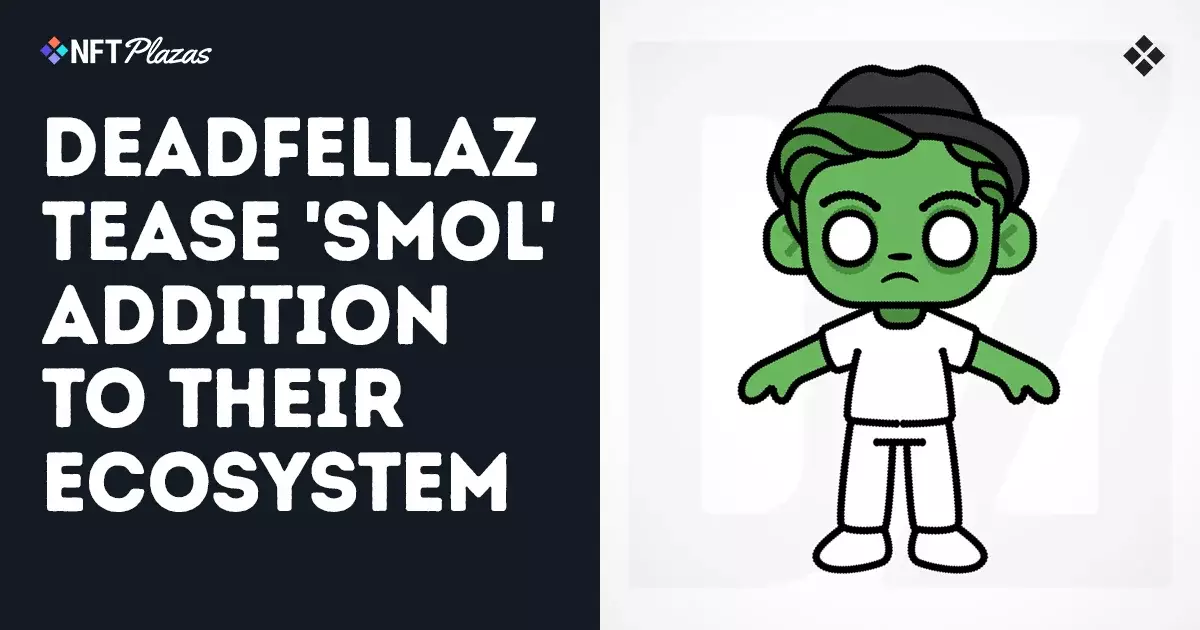The NFT industry has captivated the world, evolving rapidly from a niche interest into a mainstream phenomenon. While the hype was palpable during 2021, the market is gradually maturing, giving rise to diverse trends that could reshape its future. In this article, we will dissect five pivotal trends that are defining the NFT landscape, scrutinizing their implications and merging them with our perspectives on how they pave the path for a more sustainable and engaging future.
1. Customization and Personalization
The shift towards user-centric experiences is palpable, with projects like the Deadfellaz NFT collection pioneering customizable avatars. This trend embodies the future of digital ownership; individuals want more than just static images or tokens—they crave a unique representation of their identity in the metaverse. As we see projects developing customizable features, holders of NFTs could soon have the ability to modify their digital belongings extensively, intertwining financial investment with personal expression. The implications are significant, as these personal avatars can become extensions of users, enhancing engagement and encouraging community building.
This movement resonates with the larger fabric of consumer behavior today; people yearn to create, not merely consume. The rise of gamified customization options signifies a departure from passive ownership to active involvement. It can bridge the gap between virtual lifestyles and real-world identity, allowing fans to evolve their digital personas.
2. Cross-Platform Interoperability
The NFT space is witnessing an encouraging push toward interoperability across different platforms. This trend signals a departure from the conventional, isolated ecosystems where users were tethered to specific blockchains or marketplaces. Companies are increasingly adopting policies that encourage collaboration, with the aim of building interconnected networks. This could lead to a more vibrant, united market, where users can migrate their assets across platforms seamlessly.
Interoperability is particularly crucial in the context of gaming; it empowers players to utilize their NFTs in various environments, enhancing gameplay opportunities and enhancing the value of their digital assets. As NFTs become integrated into more popular gaming platforms and applications, we can anticipate a more cohesive metaverse experience for users.
3. Innovations in Utility
The NFT phenomenon has evolved beyond mere digital art or collectibles; its utility is becoming more multifaceted. Projects are now exploring diverse applications for NFTs, from follower perks and exclusive access to community memberships and real-world experiences. For instance, NFT holders can gain exclusive access to events or premium content, further emphasizing the value of community membership. The more utility a token has, the more likely it is to gain traction in a crowded market.
Such innovation indicates a deeper understanding of market demands, driving projects to focus not only on aesthetics but also on tangible benefits that incentivize purchasing. As integral as aesthetic appeal might be, the long-term sustainability of the NFT market may rely heavily on its utilitarian value.
4. Technological Advancements
The NFT industry is at the forefront of technological advancements, embracing innovations such as AI and blockchain upgrades to enhance its infrastructure. Enhanced smart contracts can offer more sophisticated conditions for sales and trade, while AI-driven tools are streamlining the user experience through personalized recommendations and automated transactions.
As new technologies emerge, we are likely to see a shift toward more sophisticated visual representations and experiences. Projects that leverage these advancements will ultimately find themselves in a catbird seat, capable of delivering immersive environments that captivate consumers.
5. Sustainability in Blockchain
The spotlight on environmental concerns has reached even the virtual confines of the NFT world. Many projects are now investigating sustainable blockchain alternatives, shifting focus from resources that require immense energy to processes that limit their carbon footprints. Innovators are paving the way for greener technologies, which could be pivotal in enhancing the NFT market’s public image.
As more consumers align their buying preferences with brands that reflect their values, the NFT industry must accordingly adapt to this trend. An emphasis on sustainability may indeed help revitalize its reputation, making it palatable for a wider audience seeking social responsibility alongside digital ownership.
What we have witnessed within the NFT ecosystem paints a complex picture—one of burgeoning creativity and evolving paradigms. The trajectory of these five trends will likely shape not only the NFT market but also influence broader digital interactions, bridging gaps between identity, community, and tangible benefits in a way that has yet to be fully realized. The evolution is only just beginning, and it is poised to redefine engagement in the digital frontier.

